As is sometimes the case here on Sarna.net, I must begin this article with an apology. I had heard of MechWarrior: Living Legends many years ago, before my stint on MechWarrior Online and even while I was still replaying MechWarrior 4 for the gazillionth time, but I’d never really considered it as something I’d like to get into. Firstly because it was initially built on Crysis, a game famous for taking modest gaming PCs and turning them into shambling corpses unable to render a single frame, and secondly because it was an online multiplayer shooter of the kind that I just had little interest in.
Fast forward many years later and I would still occasionally see news about MechWarrior: Living Legends on social media, but I always passed it off as such a tiny corner of the wider BattleTech community that it was hardly worth mentioning. I hope this article–and perhaps more like it–will make amends for my transgression.
And as I’ve found out over the years, I was wrong about many things, and certainly wrong about MechWarrior: Living Legends. It is a game worthy of my attention and the attention of any BattleTech fan looking for a different kind of BattleTech experience.
Although I wasn’t wrong about it having a very small community, I’ve discovered that small doesn’t mean disorganized. They even have a PR guy, whom I will give full credit for sending me on this journey into yet another weird and wonderful corner of the BattleTech universe (and also being a great historian for MechWarrior: Living Legends–shout out to you, Bird_Thing).
Apologies out of the way, let’s get this party started. This week on Did You Know?, we’re looking at an older MechWarrior title with an interesting origin story and gameplay unlike any other game in the franchise. Mostly because it’s not an officially licensed product and so it never had to conform to the rules. Welcome to MechWarrior: Living Legends.
How To Be A Living Legend
As I mentioned before, MechWarrior: Living Legends has a small community both developing and playing it, so you might not have even heard of this game. Allow me to illuminate.
MechWarrior: Living Legends started life as a Crysis total conversion mod that has since become a game unto itself. Although it still prefers to call itself a Crysis total conversion mod, Living Legends has its own stand-alone installer and has virtually nothing in common with the original game from which it’s based on.
If I had to describe Living Legends in a single sentence, I’d say it’s Battlefield, but BattleTech. Unlike most MechWarrior games that focus on the ‘Mechs, Living Legends provides players with several different options of vehicles to play as well, including Aerospace fighters, tanks, VTOLs, and even battle armor.
Although there are several different game modes available, the most common (at least, from my short time playing in it) is Terrain Control, where each team attempts to capture control points in order to drain the opposing team of tickets. Once a team’s tickets are exhausted, that team loses unless they can also exhaust their opponent of tickets within a short period of time in a sort of sudden-death showdown.
While this might sound similar to MechWarrior Online’s Conquest mode, the two are starkly different. For starters, MechWarrior: Living Legends games can go on for much longer than a single round in MechWarrior Online, with games sometimes taking over an hour to conclude. Players also respawn after death and must purchase new machines to fight with each time using a pool of accrued credits based on their performance.
But perhaps the single largest difference between the two games is pacing. Yes, you can respawn in Living Legends so you never need to wait more than a few moments to get back to the action, but simply running to the battlefield any dying to enemy fire over and over again won’t actually get you anywhere. You gain credits based on how long you survive, and so it’s important for you to play strategically (I’d even go as far as saying “carefully”) in order to preserve your machine. Falling back to repair and rearm is far more beneficial than dying and respawning.
Understanding that your survival has meaning beyond merely staying alive is fundamental to a player’s success in MechWarrior: Living Legends. If all you do is run in with an Osiris and die repeatedly, you’ll never be able to afford heavier, more impactful units that can truly sway the tide of battle.
And I’ll admit that it took me at least three games before I understood this concept. RIP my Osiris.
But Is It BattleTech?
MechWarrior: Living Legends takes an approach to balancing itself that is similar to MechWarrior Online. Yes, there are Clan and Inner Sphere units, but their respective stats have been tweaked to resemble a fair playing field. And while it seems that the developers have tried to stick with cannon designs as much as possible, there are a lot of differences between classic BattleTech and Living Legends.
For starters, Inner Sphere ‘Mechs have lettered variants for every chassis similar to the Clans, and those variants don’t have a lot in common with their tabletop counterparts. Even some “prime” variants like the Marauder have two AC/5s instead of one and can run at 86 kph instead of 64 kph. Again, this is all in the name of parity between Inner Sphere and Clan factions so that each game is fair and balanced.
There’s no ‘Mechlab and no customization of any kind. You can change your paint job for some appropriate camouflage, but that’s it. Some BattleTech purists might lament the loss of such an iconic part of the BattleTech experience, but you can understand how quickly players will become irate at a teammate that takes 10 minutes to design their perfect custom machine only to lose every control point on the map and cost their team the game.
A more interesting aspect of Living Legends is the ability to pilot vehicles. You start the game equipped with battle armor (Elementals for the Clans, Longinus for the Inner Sphere), but they’re generally ineffective on their own with only a single-shot SRM-2 and a small laser to work with (although I am told there are some legendary battle armor players that will ruin your day with a man-portable PPC). Tanks such as the Harasser or Goblin can provide additional firepower at a premium price, while Aerospace assets like Corsair or Visigoth can provide extreme mobility and take advantage of an enemy lacking in anti-aircraft weaponry. You can even take a Long Tom to lob artillery at opponents.
This move away from ‘Mech-centricity and towards combined-arms combat is MechWarrior: Living Legends‘ greatest strength, although I recommend that only experienced pilots take the wheel of a hovercraft or Aerospace fighter. In the one game I decided to play a Harasser, I flipped my hovertank in the first five minutes of battle and couldn’t get it righted. At least ‘Mechs don’t have to worry about falling on their backs like an upended turtle.
It also means that games can become truly chaotic. Some maps can have up to 14 players on each side, and with that many people all swapping their gear to gain an advantage on their opponents, you might be dealing with a wave of Aerospace fighters one second and a team of LRM-equipped high-speed harassers the next. Staying alive and capturing resource points should be your primary concern in the early game, and only later in the match should you even consider moving to larger, more formidable units.
After charging in and dying repeatedly for my second game–which relegated me to light ‘Mechs for the entire 30-minute match–I finally decided to change tactics on my third game. I picked an Owens equipped with LRMs and stayed well back from the fight, lobbing missiles at targets of opportunity and retreating whenever the enemy got too close. I managed to survive (and even get a few kills) for long enough that I was able to swap my Owens for a Marauder on my next return for ammo and repairs, and then I was able to truly anchor the line in my team’s next big firefight.
It was a totally new way of playing MechWarrior that I’d never experience before and I’m embarrassed it took me so long to understand the flow of MechWarrior: Living Legends. But then, the folks behind Living Legends started with a totally different mindset for this game than any other MechWarrior game ever made.
Genesis Of Living Legends
Living Legends got its start way back in 2006 under a development team called Wandering Samurai Studios (WSS). They initially started working on the game using the Quake engine, but then decided to change course with the arrival of Crysis in 2007. From the beginning, the idea was to make Crysis into a game like Battlefield 2142, using BattleTech as the inspiration for all the sci-fi tanks, space fighters, and giant stompy robots.
Wandering Samurai Studios succeeded spectacularly. The initial beta release of MechWarrior: Living Legends released in December 2009 and received its first patch in January of 2010. It then went on to win 2010’s Mod of the Year from ModDB, the massive modding community site that also hosted MechWarrior: Living Legends. It would also get an honorable mention in 2011’s Mod of the Year awards after the mod achieved a second year of high votes, but wasn’t allowed to win the award two years in a row.
This was the golden age of MechWarrior: Living Legends. There was even talk within the community of packaging up Living Legends and selling it as its own game.
Then two things happened. The first was MechWarrior Online. This portion of Living Legends legacy is shrouded in some controversy, so I’ll just provide key points. Both Living Legends and MechWarrior Online used the same engine: Crysis. Living Legends had a non-commercial license to use the engine, while MechWarrior Online had every intention of making as much money as humanly possible. PGI felt that Living Legends might split their target audience and exerted some pressure to have Wandering Samurai Studios cease production.
That last bit is where lies the controversy. Neither PGI nor WSS state that there was ever a cease and desist letter sent, but that might not have been necessary. Several WSS members worked at Crytek, the company that made Crysis and the Crytek engine, and having some of your employees trying to make a free game that sucks players from one of your customers is certainly a bad look.
According to Mandalore Gaming, a YouTuber that covered a bit of Living Legends in his review of MechWarrior Online, PGI met WSS at the 2012 Game Developers Conference and politely asked them to cease development of Living Legends. Which they did after the final 0.70 update released on January 16, 2013, simultaneously announcing that they’d move on to other projects.
The second was the death of Gamespy in 2014. MechWarrior: Living Legends relied on Gamespy’s servers for matchmaking, and without them, nobody could actually play Living Legends. At the time, this seemed to be the final nail in Living Legends’ coffin, and there was widespread belief that this would be the end of this beautiful little game.
Living Legends Lazarus
I may have forgotten to mention something earlier: MechWarrior: Living Legends has a small and highly dedicated community. They wouldn’t let a tiny thing like the departure of the entire development team and the destruction of the fundamental backbone of the MW:LL‘s online matchmaking prevent them from keeping their beloved game alive.
In 2013, the MW:LL community released a universal installer for the game that no longer required Crysis (or Crysis Wars) to run. It still used the same engine, but for all intents and purposes, MechWarrior: Living Legends was its own game.
Throughout 2015, the MW:LL forums are used to assemble, document, and just fucking cludge together workarounds to the total lack of Gamespy servers. This allowed the community to keep playing as a more long-term solution was sought.
That solution happened at the end of 2015 with a brand new launcher that would search for active game servers and provide them to the user. This came after the better part of a year trying to track down the source code and many more months of trying to get it to compile. MechWarrior: Living Legends had officially returned from the dead.
Thus began a new era for MechWarrior: Living Legends, one we can consider a sort of community-driven renaissance. WSS gave their blessings to a new development team, with Living Legends co-founder Kamikaze making that announcement in January of 2017. Since then, iterative updates have continued to add content to Living Legends in the form of new maps, units, and a new login service that made MW:LL completely independent of third-party services.
That team continues to work on Living Legends to this day. The most recent major update, 0.12.0, added the Sunder and Kodiak ‘Mechs to the game, along with a slew of balance and bug fixes. The team plans to add the Mars and Behemoth tanks for the next major update as well as adding the C3 Master equipment.
Where To Go From Here
For those looking for more info on Living Legends, there are a whole bunch of resources for you. There’s of course Sarna’s page, which will provide a good overview of the game, it’s history, and what units you can expect to find. There’s a far more detailed Living Legends wiki, which not only provides detailed unit specs and gameplay explanations but also provides an excellent primer for those looking to get into the game (with a sub-primer for those transferring over from MechWarrior Online).
And of course, there’s a Reddit, forums, Discord, and ModDB page too.
Of all the BattleTech fan projects I’ve played, MechWarrior: Living Legends is easily the most polished. There’s a lot of love in this game, and it’s that love that keeps the game going. Not at all unlike BattleTech itself.
If you do download the client (which again, is totally free and doesn’t require Crysis to play anymore) I recommend perusing the new player guides first and familiarizing yourself with the controls. Head to an empty server to test things out (“Free Testing Practice” on the 12th VR game server network has one with unlimited credits for new players to test things out) and get yourself situated with some early-game units. Then it’s time to dive into an actual game.
My biggest takeaway with Living Legends is: survive. If you take damage that puts you close to death, retreat and get repaired at a ‘Mech bay. If you run out of ammo, retreat to reload. The longer you live, the more money you make, and the bigger the ‘Mech you’ll be able to purchase.
After that, your old MechWarrior reflexes should be just fine to mix it up. At least, it was for me.
And as always, MechWarriors: Stay Syrupy.
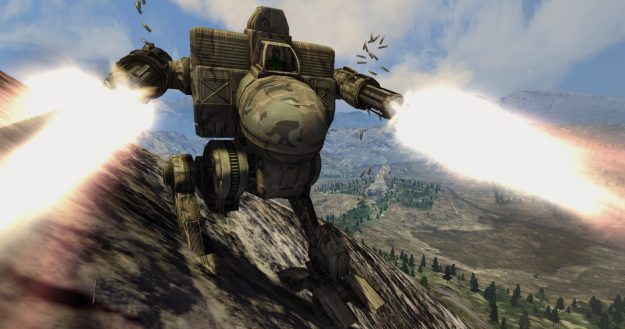

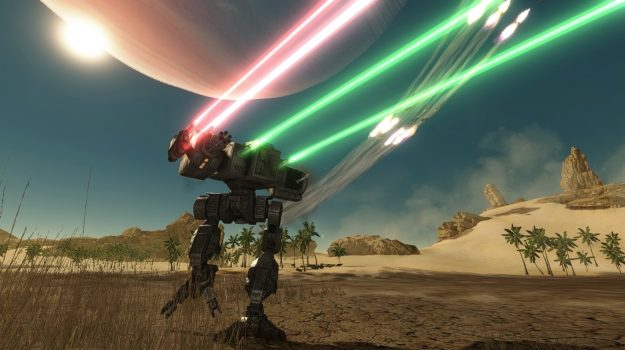



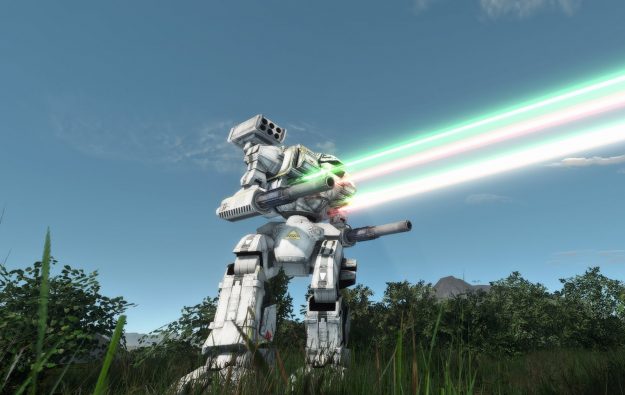

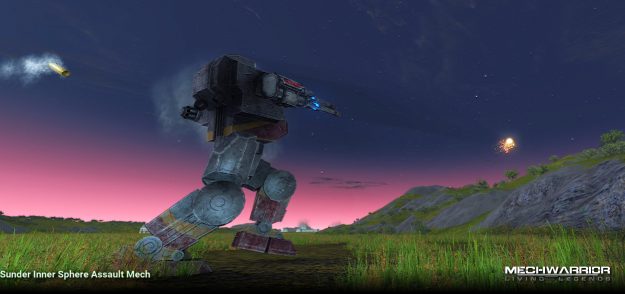
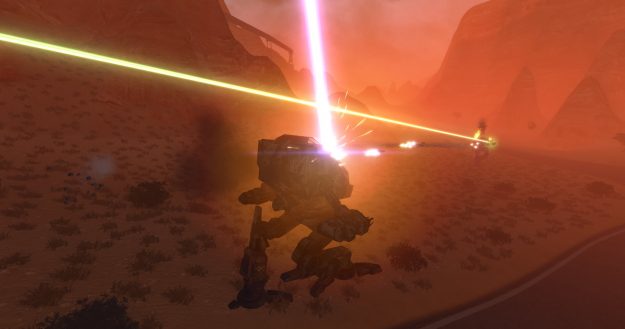

Great article!
A note: Certain routers have trouble with the games with sizes larger then 16, 18, or 20 players respectively depending on the degree of cheap chipset in the router itself. (This is because the game starts sending and recieving oversized packets that can confuse certain router chipsets.)
If you find yourself having trouble connecting, try seeding servers to about 10 players, and the game will be fine. If you find that people keep eagerly overfilling your servers, consider making servers that have a player limit of the magic number you can actually play at if you like the game.
Awesome read!
Also, for new players, don’t be afraid to ask for help – most people that play have been here for a long time and are eager to help new players.
Suit up sibko!
Silly questions:
System Reqs? As you stated Crisis is notorious for stressing systems and MWO is built on the same engine, how does it compare? Do I need more umph or can I get by with less? Some of us play on potatoes. Will I need another 60GB of space?
How does this compare to Renegade-X? I get my fix of free fan-made combined arms through them. MW:LL sounds like it’s all about map control and waiting for the enemy to bleed out whereas Ren-X is about taking out the enemy base (map control obviously helps but isn’t crucial to this objective). It’s also runs on the unreal engine so none of that absurd crisis sys-req.
As per MW:LL wiki – https://wiki.mechlivinglegends.net/index.php/How_to_Install_MWLL
CPU: Intel Pentium 4 2.8 GHz (3.2 GHz for Vista), Intel Core 2.0 GHz (2.2 GHz for Vista), AMD Athlon 2800+ (3200+ for Vista)
RAM: 1 GB (1.5 GB on Windows Vista)
Video Card: NVIDIA GeForce 6800 GT, ATI Radeon 9800 Pro (Radeon X800 Pro for Vista)
VRAM: 256MB of Graphics Memory
Storage: 10 to 15GB (new maps take additional space)
Sound Card: DirectX 9.0c Compatible
OS: Microsoft Windows XP with Service Pack 2 or Microsoft Vista
DirectX: DX9.0c or DX10
Dunno about Renegade-X, never played it. But this doesn’t quite sound the same.
I have played this game sacrificing looks (less than minimun) and fps (20 average) in an old laptop since like 2014 with these specs:
CPU: 2.2 GHz single core, Intel B960
RAM: 8 GB (2x4GB cards, but I also played it with a single 4GB card)
Graphics card: Intel HD Graphics (from 2013)
HDD: 500 GB
The idea is playing around with the config files of the game, and turning off some graphics things like particles, blur, filters, etc.
This game is awful it doesn’t live to it’s name 0/10 please add better never seen mechs instead of wasting time on a Kodiac
Apart from few factual mistakes (the MW:LL wasn’t initially writen for IDtech [quake] engine, but for Doom one; you don’t get c-bills for staying alive, but for doing damage to enemies and capturing control zones; next person who mentions Battlefront in context of MWLL will burn in hell ;) ), this is a very nice article. Thank you for increasing MWLL visibility, as it definitely deserves it.
Re the historical parts – the rumour have it that the MWO people just had enough of constantly having tor ead on their forum “why you can’t do it better, like MWLL did” (was happening all the time), thus the “request” for ceasing development. Who knows, who knows ;) The only thing that is known for sure, is that MWLL – with it nuances gameplay, [often] gargantum maps and “read the F manual” approach to mech sim – is, was, and always will be better than MWO or any other take on “official” Mechwarrior games.
Interesting article. Long time Battletech fan, have been aware of MWLL for a long time. I’d never dipped my toe into the pool because until recent years I didn’t have a machine that would handle it anyway. I checked this out to see if I’d like to give it a go now… and I must admit that I am turned off by MWLL’s method of play balance that you describe. Creating non-canon designs and bringing Inner Sphere designs up to match Clan ones simply isn’t attractive to me. In fact, I hate it — call me a lore snob.
To each their own, though, I know. To whatever extent that MWLL existing on the Periphery (see what I did there?) of Battletech serves to keep more people engaged in Battletech proper, though… thumbs up.